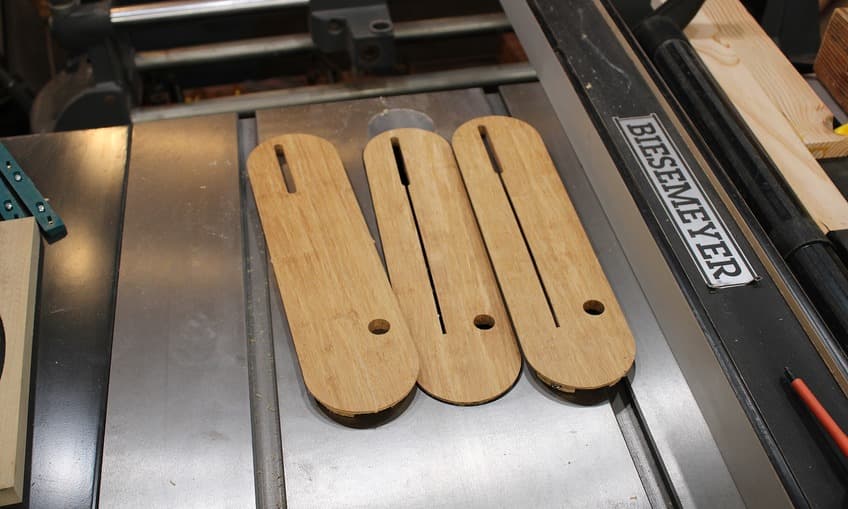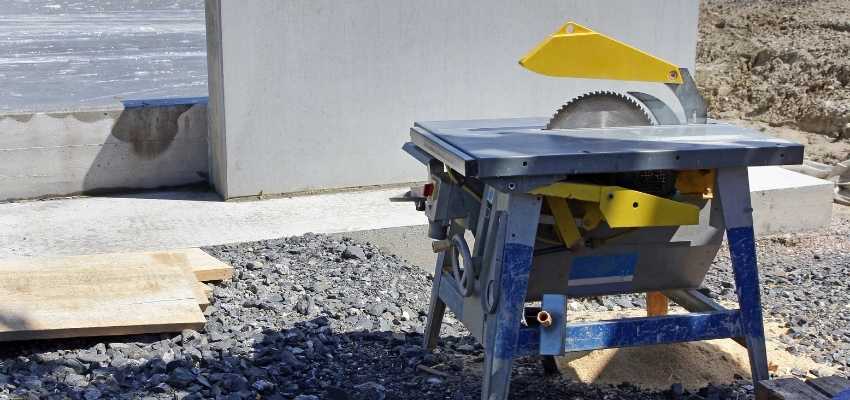Table saw is one of the important tools especially if you are a DIY enthusiast or professional woodcutter. You need to know a lot about the machine, assembly, its pros and cons and the types of cuts you can cut with it. Moreover, it has a high-speed cutting wheel, so it can put you in serious danger if you don’t know how to use it.
Related: Best table saw in uk
We have written a complete guide that can help you get familiar with your table saw.
Contents
1. Keep safety in your mind
Table saw is one of those equipments that need high skills to get started with. This is equipment that is sharp and runs on higher velocities, so any up and down can lead to severe injuries. It is always recommended to take precautionary measures, including wearing gloves, using goggles, and having some skills before using them. Moreover, if you throw the workpiece at high speed, it can blow back, causing danger to you. Any negligence may harm either your eye, finger, or hands. You can follow the following guidelines to have a safe cutting experience on the table saw.
- When you start the table saw, make sure nothing is touching the blade at that time.
- Don’t touch the blade with any sharp thing.
- Always try to hold the workpiece with a firm grip to withstand the cutting pressure of the saw.
- Don’t cut the material without the table support. Keep it flat against the table saw blade.
Moreover, when you unbox the table saw, read the complete user’s guide to get started. Once you assemble and start using it, always unplug the saw before making any changes.
2. Cutting different types of cuts
The table saws are versatile woodcutters, and you can use them to make different types of cuts such as compound cuts, rabbet joints, or dado cuts. These cuts need special jigs and fixtures and skills too. But generally, two types of cuts are in demand.
One of the most common cuts is Ripping. It is a particular cut in which the material is cut around a specific width. On the other hand, in Crosscuts, the material is cut along a specific length.
3. Knowing the components of a table saw
A table saw has the following components in it.
- Table: the working desk on which the blade saw is held for cutting operation.
- Fence: it is a wooden guide that is held parallel to the blade. It is used to maintain a distance between the workpiece and the blade during the ripping cut.
- Fence Dog: it is a lever lock that keeps the fence intact and at its place. By pulling it up or down, you can unlock the fence for positioning.
- Blade: it is the metallic cutter which is the central part of the table saw. We can use different types of blades, depending upon the hardness of the wood we will cut.
- Blade insert: it is a metallic insert used to fill the internal gap of the blade when we fix it. There are many kinds of inserts that we use in different situations.
- Adjustment wheel: The adjustment wheel adjusts the height of the cutting blade.
- Angle adjustment lever: this level adjusts the angle of the table saw blade.
- Power button: The table saw has a hinged power button. It is a push and pull button that turns on and of the machine accordingly.
4. Setting up the blade height
Setting the blade height is crucial. Because if you don’t have a proper height, your material will not be cut professionally. So one practice is to set the blade just slightly above the workpiece as high as ⅛ inches. This practice is recommended to anyone who wants to play safe and still learning to cut with the table saw.
Another method is to set the blade just equal to the height of the workpiece. This practice needs a skillful hand to cut with the table saw machine. This method cuts without fraying and tearing out but can be tacky and dangerous. In case of any slipping of the workpiece, a dangerous accident may happen.
5. Changing the blades and inserts

All the table saws have different blades and inserts that need a technique while changing them.
The table saw comes with a standard blade, which is generally used to cut RIP and Crosscuts. Until the material wastes do not fall in the inner side of the cutter, you can go with the standard blade.
When we cut such material with small size waste material, which could jam the inner side by falling into it, we use zero clearance insert. It does not let any material waste harm the inner side of the machine, and it works without any problem.
Another insert is a wide-angle insert which is used for dado cuts only.
6. Making the cuts
When you start cutting your workpiece, make sure your workpiece is kept flat at the surface, and the blade is inserted correctly. You should choose a blade that goes compatible with the metal too, as a nail is expected in the wood material, especially when you are using old wood.
Moreover, you should not use miter gauge and fence combined to cause binding, which may be harmful.
Before you start cutting, mark the length that you want to cut. Use a pencil to do markings on the workpiece. After that, adjust the blade height accordingly and align the workpiece with the blade while holding it tight. Start cutting the workpiece slowly and smoothly.
When you are done with the cutting, turn off the switch while keeping you safe from any damage.
7. Maintenance of table saw
Although the table saw is relatively easy to go with. These machines don’t require much maintenance, but if you follow a general check, they can have a longer life. You must see the drive belt if it has any wear or not. Moreover, checking the blades for any chips or wear-outs can save you from any mishaps. If you find any wear and tear either on the belt or blade, change these components immediately for a smooth and safe cutting. General cleaning, including vacuum, dusting off the dust, and lubrication, is highly recommended.
8. Dos and Don’ts of a table saw
Following things can help you go great with your table saw.
Dos:
- Choose a blade that can be compatible with metal too. As many people use recycled wood, so it is common to have a nail in it. Using the blade or wood only may harm the user in terms of safety.
- Remove the blade from the machine right after you use it. It may look difficult at the start but once you maintain this habit, it can bring safety and perfection to your work.
- Use all the safety gears while working on it.
- Vacuum the workplace and dust all the wooden chips after doing your work. It not only keeps the environment clean but also increases the life of machine.
Dont’s:
- Don’t keep your hands closer to the blade.
- If you use the fence and miter gauge together, they can bind the workpiece and it can kick back on your face. So don’t try this combination while working.
- When you push the material to the blade, use firm but light pressure. Using hard push may result in a kickback of the workpiece.
- Don’t cut the sticks and blocks with the table saw. If your block and sticks get friction, it means you are not using them in the right way. Learn and fix the issue to have maximum safety of your hands.
Related:
FAQs
1. What can you do with a table saw?
Table saw is one of the most important tools of a woodworker. It has versatile usage and you can use it to make Rip, crosscuts, dado, miter cut, square, and many other shape cuttings. You can also add shapes to the edge of a wooden stock with a table saw.
2. What is the most common use of a table saw?
A table saw is a versatile tool that helps to make different cuts on the wood. You can make three types of cuts with the table saw. These cuts are named Ripping cut, crosscut, and dado cut.
3. What we cannot do on a table saw?
You can’t do a freehand cutting on a table saw. Only those cuts are feasible that work along with the guide and you can handle them.
